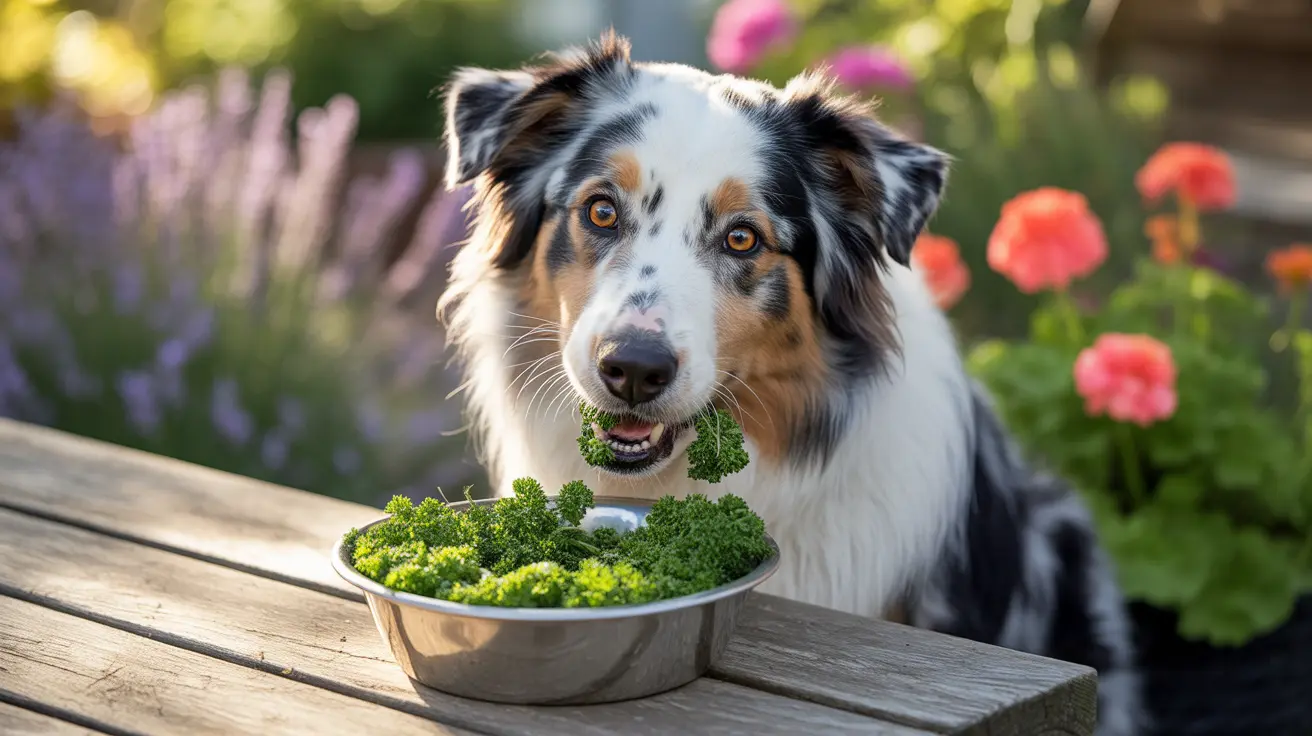As pet owners increasingly explore natural dietary supplements for their dogs, parsley has emerged as a topic of interest. While this common herb can offer numerous health benefits for dogs, it's crucial to understand which types are safe and how to properly incorporate them into your pet's diet.
In this comprehensive guide, we'll explore everything you need to know about feeding parsley to dogs, including safety considerations, health benefits, and proper serving methods.
Safe vs. Unsafe Parsley Varieties for Dogs
Not all parsley varieties are created equal when it comes to canine consumption. The key distinction lies in the type of parsley you choose:
Curly Parsley: The Safe Choice
Curly parsley (Petroselinum crispum) is the only variety considered safe for dogs. This type can be beneficial when fed in moderate amounts and is recognized by its distinctive ruffled leaves.
Varieties to Avoid
Flat-leaf, Italian, and spring parsley contain harmful compounds called furanocoumarins, which can cause serious health issues in dogs, including:
- Dermatitis
- Digestive problems
- Potential blindness
- Other toxic reactions
Health Benefits of Parsley for Dogs
When fed appropriately, curly parsley offers several health advantages for dogs:
Natural Breath Freshener
The chlorophyll in parsley acts as a natural deodorizer, helping to combat bad breath at its source by neutralizing odor-causing bacteria.
Immune System Support
Parsley is rich in essential vitamins and minerals that boost immune function:
- Vitamin C for antioxidant protection
- Vitamin A for immune response
- Vitamin K for blood health
- Iron for oxygen transport
- Potassium for nerve function
Digestive Health
The fiber content in parsley can help regulate digestion and promote healthy bowel movements. It may also help soothe minor stomach upset when fed in appropriate amounts.
Safe Feeding Guidelines
Proper Serving Sizes
Follow these general guidelines for feeding parsley to dogs:
- Small dogs: Up to 1/2 teaspoon chopped
- Medium dogs: Up to 1 teaspoon chopped
- Large dogs: Up to 2 teaspoons chopped
Preparation Methods
You can incorporate parsley into your dog's diet through several methods:
- Finely chopped and mixed with regular food
- Brewed as a weak tea (cooled)
- Added to homemade dog treats
- Blended into a smoothie with dog-safe ingredients
When to Avoid Parsley
Some dogs should not consume parsley, including:
- Dogs with kidney problems
- Pregnant dogs
- Dogs with known herb allergies
- Puppies under 6 months
- Dogs on certain medications
Frequently Asked Questions
Can dogs eat parsley, and are all types of parsley safe for consumption?
No, not all types are safe. Only curly parsley is recommended for dogs, while flat-leaf, Italian, and spring parsley varieties should be avoided due to their toxic compounds.
How much parsley should I feed my dog to avoid digestive issues?
Start with small amounts (1/2 teaspoon for small dogs, up to 2 teaspoons for large dogs) and feed only 2-3 times per week. Monitor your dog for any adverse reactions.
What are the health benefits of parsley for dogs, and how can it support their immunity?
Parsley provides vitamins A, C, and K, along with minerals that boost immune function. It also contains antioxidants that help fight inflammation and support overall health.
Can I use parsley as a natural breath freshener for my dog?
Yes, parsley's chlorophyll content makes it an effective natural breath freshener. However, it should be used as part of a broader dental hygiene routine, not as the sole solution.
Are there any specific health conditions where dogs should avoid eating parsley?
Dogs with kidney problems, pregnant dogs, and those with certain medical conditions should avoid parsley. Always consult with your veterinarian before adding parsley to your dog's diet.
Remember to always introduce new foods gradually and watch for any adverse reactions. When in doubt, consult with your veterinarian before adding parsley to your dog's diet.






